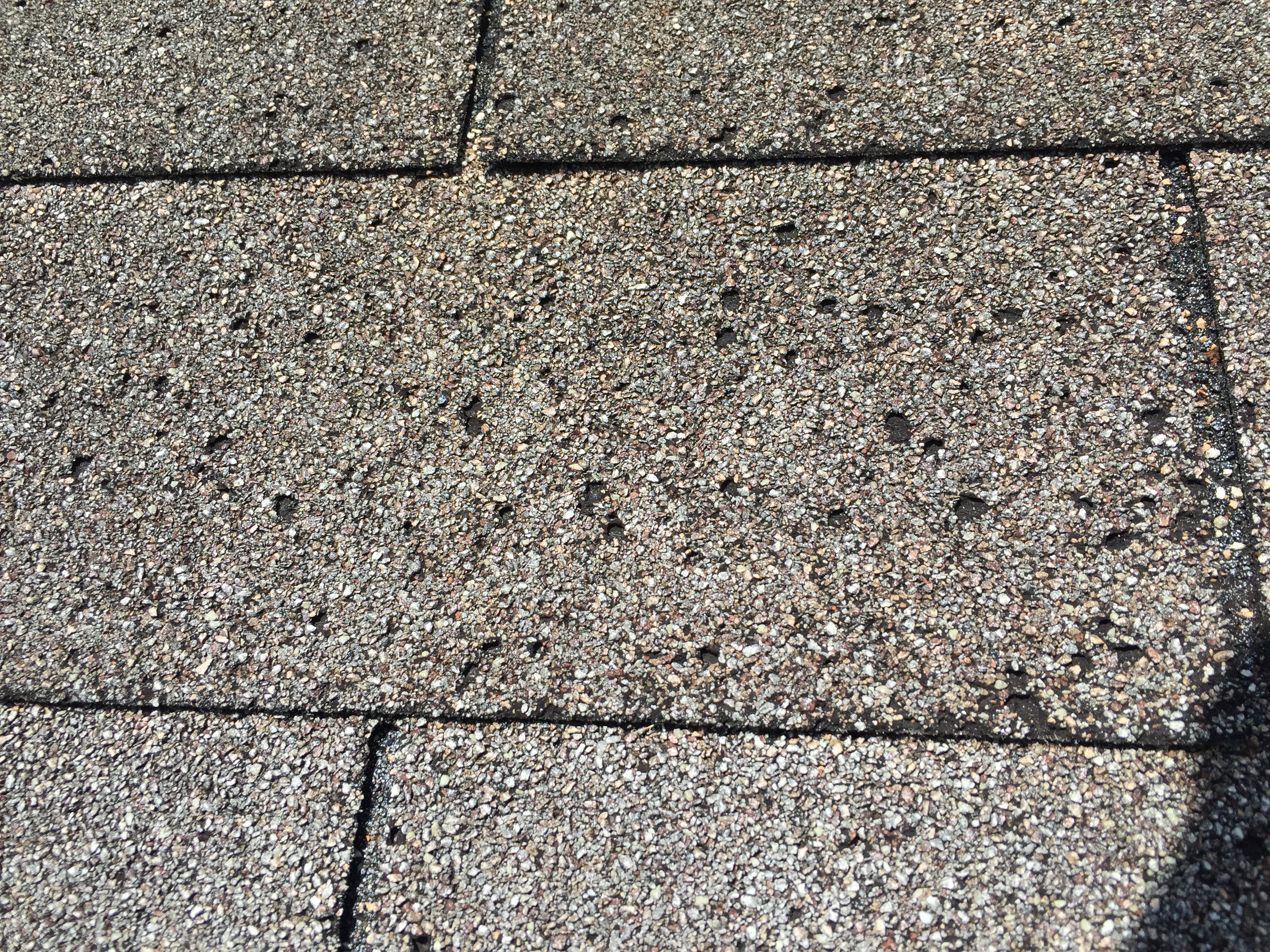
Is this hail damage… or a blister? How can I tell?
Over the course of about twelve weeks, I inspected and reported on over three hundred roofs. The majority of inspections were for various insurance carriers, while some were for homeowners, attorneys or large commercial properties. A vast majority of the roofs I inspected were asphalt shingles and were door-knocked by canvassers that told the owner they had sustained hail and/or wind damage from a recent storm.
As a roof consultant I typically get called out when the carrier is inundated with a large amount of claims and they cannot service their insured(s) quick enough; or when a claim is in dispute and an experts opinion is required. We tend to run into the same roofing company(s) and even the same company’s representative over and over again. I have found that many of these company representatives are telling an owner to file a claim because they actually believe that what they see on the roof is a result of hail damage.
From there, many of the adjusters are paying for roof replacement because they too believe that what was observed on the roof is functional damage from hail strikes. Of the 300+ roofs I inspected, 40%-45% of them were suffering from blisters that occurred as a result of the manufacturing process and showed NO direct, physical damage from hail strikes on the asphalt shingles in the field, or on hips and ridges. They also showed NO collateral damage in the form of hail spatter on the soft roofing metals, penetration flashings or roofing appurtenances.
If collateral damage does not exist and there is no direct, physical damage from hail strikes, then why is the roofer(s) telling the homeowner to file a claim and why is the adjuster(s) paying for it?
Blisters in asphalt shingles are caused when moisture is trapped within the shingle during or very soon after the manufacturing process. As the shingle is heated up, the blister expands within the shingle and eventually splits or pops. What is left is a void in the granules that leaves the underlying asphalt exposed and possibly the fiberglass mat. Blisters are commonly misidentified as hail impacts when they are the result of a manufacturing defect.
I’ve been asked many times how can one distinguish between a blister and a hail impact? The best way to distinguish between a hail “impact” and a blister is by closely observing the spot in question. In most situations, a damaging hail strike will cause a mark on the shingle that is mostly circular in shape and will be accompanied by localized granule loss, asphaltic exposure and a fracture of the fiberglass mat. The impact will be concaved or dipped in and is a result of downward pressure from the hail stone. Blisters on the other hand are a result of expansion or upward pressure from the heated up moisture that was trapped within the shingle during, or soon after the manufacturing process. When depressed, the blister will have no fracture of the fiberglass mat.
The best way to identify if hail or wind damage has occurred on an insured’s roof, especially in dispute situations is to hire a roof expert like Max Consulting Services. Our team of experts will inspect the roof, identify storm damage, mechanical damage, manufacturing defects, installation issues and other anomalies that exist on the structure. They will then identify if the roof can be repaired and the replacement cost. Detailed wholesale, retail and Xactimate estimates are available upon request.
Download a copy of this .pdf here: blister-vs-hail-impact
